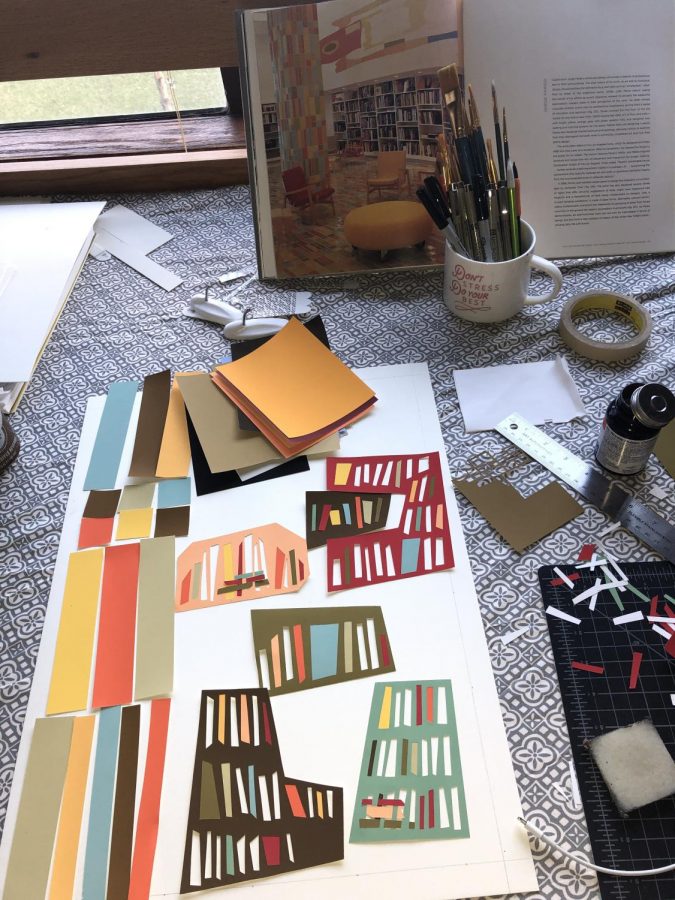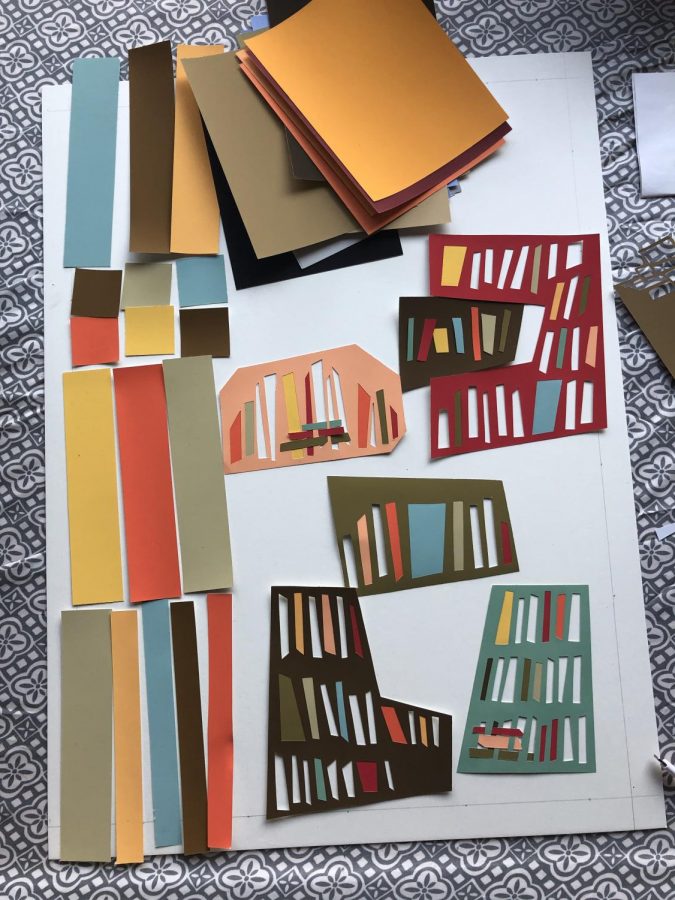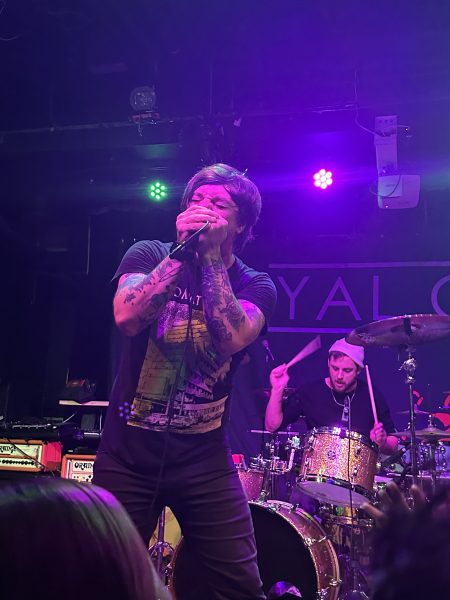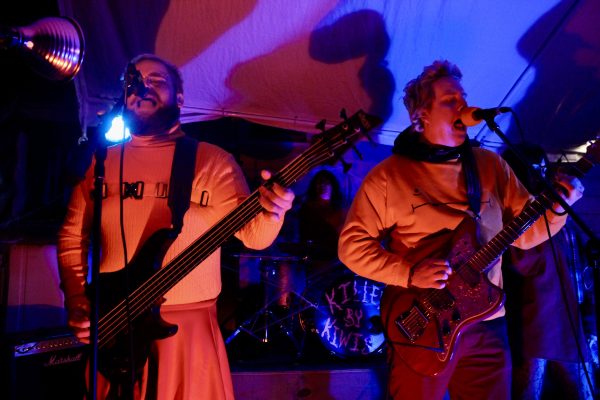Studio Arts students continue creating art during hectic times
Professor Aida Audeh of the Hamline Studio Arts and Art History department shares how the department handled remote-instruction for studio arts classes during COVID-19.
The second phase of preliminary work on a piece of art by studio arts student Anabelle Andres, who is taking Art Foundations with professor Allison Baker. The class has relied on technology to build the studio environment remotely as students create and share their work.
May 14, 2020
Social distancing has greatly affected hands-on learning courses. During the pandemic, the studio arts department has been alternating between two forms of online learning.
“Faculty in our department are meeting with students online in a combination of synchronous and asynchronous sessions,” Professor Aida Audeh said.
Audeh is the chair of the department of Studio Arts and Art History, and teaches art history within the department. She said that throughout the department, “some lessons and demonstrations of art techniques are done live, and some are recorded. We had to improvise to some extent in terms of materials and techniques as we can’t access our studio spaces this term, but our faculty found many innovative ways to work with students from home, outside the studio.”
According to Audeh, one of the biggest difficulties that has come with teaching and creating during unprecedented times is the loss of face-to-face interactions.
“The biggest challenge has probably been not being able to be together face to face in the studio setting where faculty and students are used to working together to create art. There’s a great comradery that develops in the studio and it can be challenging to try to replicate that studio environment virtually,” Audeh said.
Despite the setbacks, Audeh commends her colleagues and students for their handling of the situation, and for their continued support.
“ I think what’s really interesting is how open to change and creativity our faculty and students are in our art classes,” Audeh said. “Any new situation, even this one, can lead to great creative experimentation and expression. The creative expression continues and is needed now, maybe more than ever, when we’re going through challenges like this and doing it together.”
With uncertainty surrounding whether fall classes will be able to commence in person, the studio arts and art history department remains prepared to do what is necessary to keep students safe and continue classes whether back on campus or online.
“Like the rest of the university, going forward we are hopeful we will have in person classes in Fall 2020, but our faculty and students are ready to pivot quickly to online sessions if and when needed,” Audeh said. “So much is not quite clear at the moment with regard to the virus, so we’re ready to do what is needed for our students’ health and safety. Our faculty will be present for our students whether in person or online, in any way we have to be.”
Audeh added that the department’s plans would not have worked without the continued cooperation and support from students, leading to a stronger community even in socially distant times.
“Our faculty develops great relationships with our students working closely together on creative expression. Whether the conversations are face to face in the studio or via a computer, our students know how much our faculty care and want to support them during this difficult time,” Audeh said.







Aida Audeh • May 15, 2020 at 9:19 am
To clarify – I am the Chair of the Department of Studio Arts and Art History and also serve as Administrative Head for the Fine Arts division (including the departments of Studio Arts and Art History, Music, Theatre and Dance, and Creative Writing) of the College of Liberal Arts within Hamline University. The article here concerns the pedagogical approach of faculty within my particular department (Dept of Studio Arts and Art History).
Aida Audeh
Prof. of Art History
Chair, Dept of Studio Arts and Art History
Administrative Head for Fine Arts Division, CLA